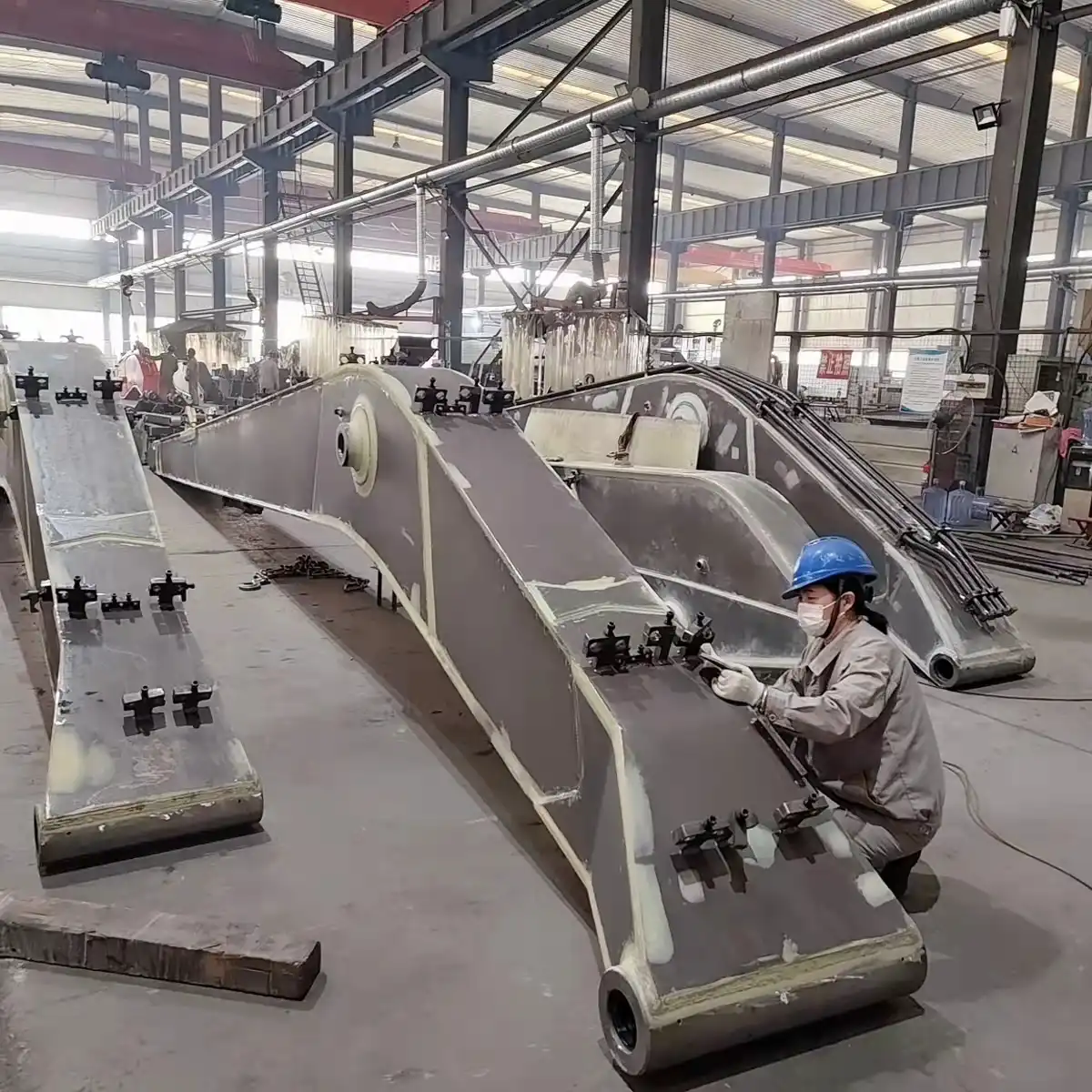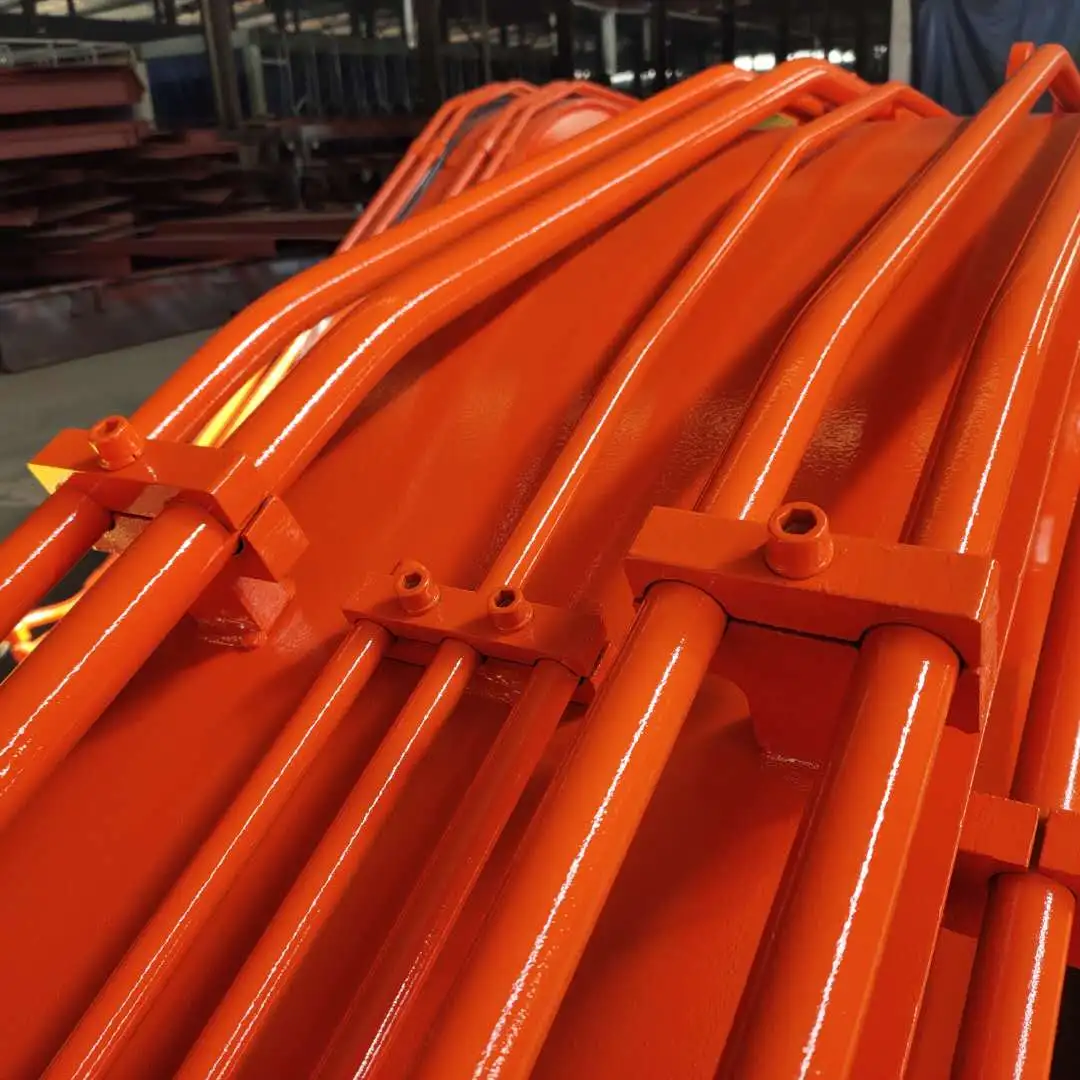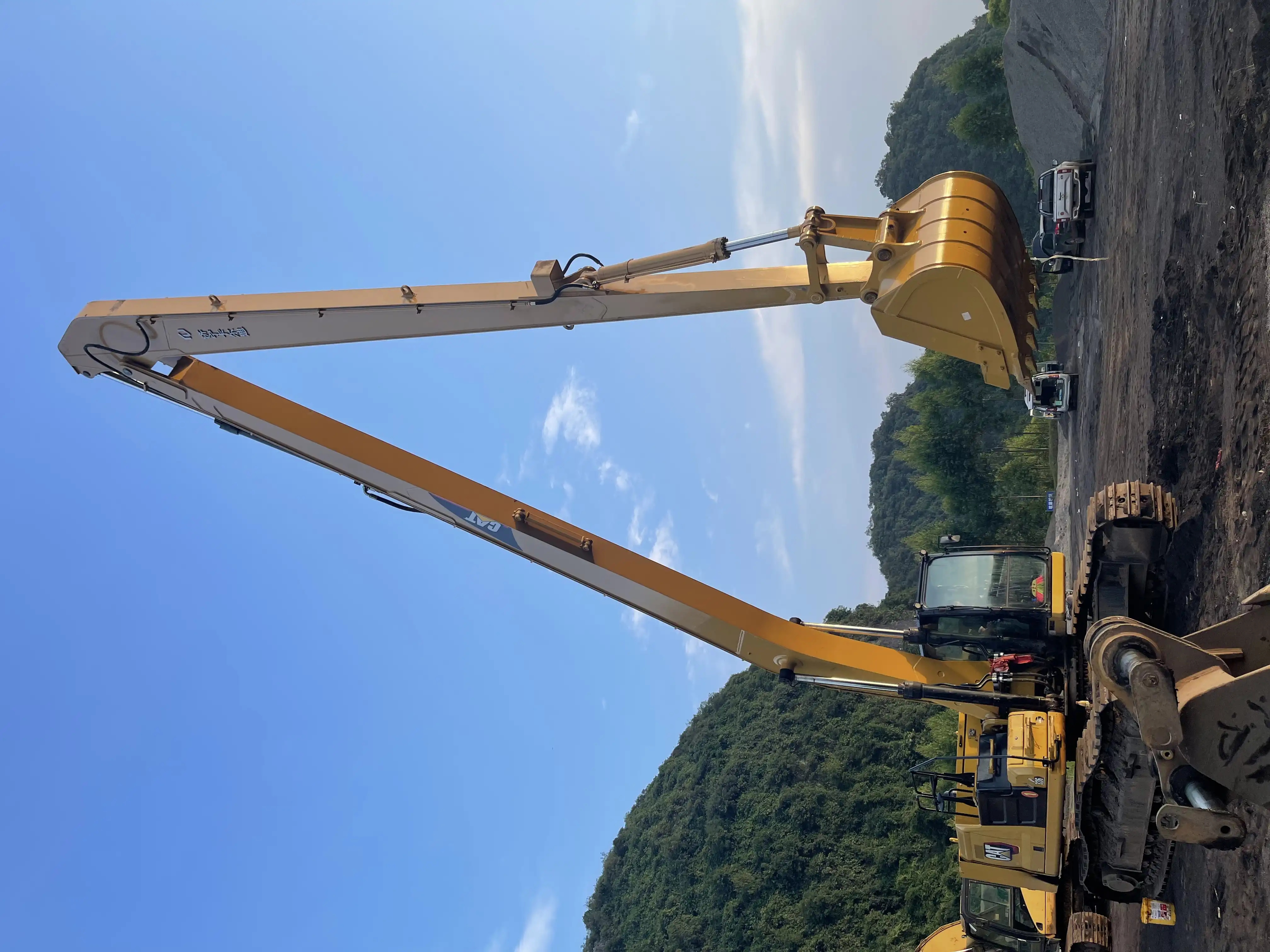What is the difference between a long reach excavator and an excavator?
When it comes to heavy machinery for construction and excavation projects, understanding the differences between specialized equipment can significantly impact project efficiency and cost-effectiveness. A standard excavator is a versatile piece of equipment found on virtually every construction site, but a long reach excavator—featuring an extended excavator long arm—serves a more specialized purpose designed for specific applications where standard machines simply cannot reach.
The fundamental difference between a long reach and a standard excavator lies in their arm configuration. A long-reach excavator is essentially a modified standard excavator equipped with an extended boom and arm assembly that provides significantly greater reach both horizontally and vertically. This specialized long arm configuration allows operators to access areas that would otherwise be impossible or unsafe to reach with conventional equipment.
Structural Design

Extended Boom and Arm Configuration
The most distinctive feature of a long reach excavator is its specialized boom and arm assembly. Unlike standard excavators that typically offer a maximum reach of 25-30 feet, long reach models can extend to impressive distances of 40-100 feet depending on the specific model and configuration. This extended reach is achieved through a completely redesigned front attachment system that includes a longer main boom, extended arm, and sometimes additional boom sections.
The excavator long arm components are engineered using high-strength steel alloys that maintain structural integrity while minimizing weight. This precision engineering ensures the extended components can withstand the significant stress placed on them during operation. The longer components require specialized pin joints and hydraulic systems that can manage the increased leverage forces generated during excavation activities.
Manufacturers often incorporate additional structural reinforcements throughout the machine frame to accommodate these extended components. The boom-arm connection points feature larger pins and bushings to handle the increased torque, while the arm itself often incorporates a tapered design that optimizes strength-to-weight ratio along its length.
Counterweight Systems
Long reach excavators require substantial counterbalancing to offset the extended arm assembly and maintain operational stability. These machines typically feature significantly heavier counterweights than their standard counterparts—sometimes 20-40% heavier depending on the reach extension. Some advanced models incorporate adjustable or modular counterweight systems that can be customized based on specific job requirements and attachment configurations.
The counterweight design must be carefully integrated with the machine's undercarriage to ensure proper weight distribution across the tracks or wheels. This integration often requires a redesigned chassis with reinforced mounting points and enhanced structural support. On larger models, the counterweight may extend beyond the rear of the machine further than on standard excavators, increasing the machine's overall footprint and turning radius.
Hydraulic System Modifications
The hydraulic systems in long reach excavators undergo significant modifications to accommodate the extended components. These machines require larger capacity hydraulic pumps and motors to maintain adequate pressure and flow rates across the longer hydraulic lines. The cylinder sizes and configurations are often different from standard models, featuring longer stroke lengths and possibly reinforced seals to manage the additional stresses.
Advanced long reach models incorporate sophisticated hydraulic control systems that provide precise control over the extended components. These systems often feature enhanced pressure compensation, flow sharing capabilities, and specialized valve blocks that help operators maintain control precision despite the increased leverage. Some machines include additional hydraulic circuits specifically designed to manage the complex movements required when operating at maximum extension.
Operational Capabilities

Reach and Depth Capacities
The most significant operational advantage of long reach excavators is their exceptional reach capabilities. Standard excavators typically have a maximum horizontal reach of 25-35 feet, while long reach variants can extend 40-100 feet or more depending on the model and configuration. This extended reach translates directly to increased operational versatility, allowing these machines to access areas that would otherwise require temporary infrastructure or specialized equipment.
Vertical reach capacities see similar improvements, with long reach arms capable of working at heights significantly greater than standard models. This vertical advantage makes them particularly valuable for tasks like building demolition, where operators can safely position the machine at a distance while still reaching upper floors of structures. The extended excavator long arm also provides impressive below-grade working depths, allowing operators to excavate deep trenches or dredge underwater areas while maintaining a safe distance from unstable edges.
These extended capabilities allow long reach excavators to work across obstacles like waterways, ravines, or environmentally sensitive areas without direct encroachment. By positioning the machine on stable ground while extending the arm across these obstacles, operators can complete necessary work while minimizing environmental impact and avoiding costly temporary infrastructure.
Lifting and Digging Power
While long reach excavators excel in reach capabilities, they necessarily sacrifice some lifting and digging power compared to standard models. The physics of leverage means that as the arm extends further from the machine's center of gravity, the maximum lifting capacity decreases proportionally. Operators must carefully consider this reduced lifting capacity when planning operations and selecting attachments for specific tasks.
The digging force at the bucket tip also diminishes with increased distance from the machine. Standard excavators typically generate tremendous force at the bucket, but this force decreases significantly as the arm extends on long reach models. This reduction in digging power makes long reach excavators less suitable for hard material excavation at maximum extension, though they remain effective for softer materials and precision work.
Many long reach excavators compensate for these limitations with specialized attachments optimized for extended reach operations. These might include lighter-weight buckets designed for reduced material density, grapples for debris handling, or specialized shears for demolition work that require less force than primary digging operations.
Application

Waterway Management and Dredging
Long reach excavators excel in waterway management applications where their extended reach capabilities allow operators to perform dredging and maintenance operations from the shoreline. This eliminates the need for expensive barges or temporary platforms in many scenarios, significantly reducing project costs and environmental impact. The excavator long arm can reach well into waterways to remove sediment, clear vegetation, or reshape channels while the machine itself remains on stable ground.
These machines are particularly valuable for flood control projects, where they can efficiently clear debris from waterways and restore proper flow channels after severe weather events. Their ability to reach across sensitive riparian zones without direct encroachment helps minimize environmental damage during these critical operations. The extended reach also proves invaluable for constructing erosion control measures along waterways, allowing precise placement of materials without disturbing sensitive areas.
In large-scale dredging operations, long reach excavators often work in conjunction with specialized dredging attachments that can efficiently remove underwater sediment. These attachments may include specialized dredging buckets, pumping systems, or clamshell grabs designed specifically for underwater material removal. The precision control offered by modern hydraulic systems allows operators to maintain accurate dredging depths even when working at significant distances from the shoreline.
Demolition Operations
The demolition industry has embraced long reach excavators as essential tools for safely dismantling structures while maintaining appropriate safety distances. The extended reach allows operators to work from a safe distance when demolishing unstable structures, significantly reducing the risk of injury from falling debris. This capability is particularly valuable when working with older buildings that may contain hazardous materials or structural uncertainties.
High-reach demolition operations benefit particularly from specialized long reach excavators that combine vertical reach with the power necessary to dismantle robust structures. These specialized machines may feature multi-section booms that can be configured for different height requirements, along with dedicated demolition attachments like crushing jaws, shears, or impact hammers.
The precision control offered by modern long reach excavators supports selective demolition techniques that preserve portions of structures while removing others. This surgical approach to demolition reduces waste and supports sustainable construction practices by allowing materials to be separated for recycling or reuse. The extended reach also facilitates the safe removal of specific building components without compromising surrounding structures or infrastructure.
FAQ
①What is the maximum reach of a long reach excavator?
The maximum reach of a long reach excavator varies significantly depending on the model and configuration, typically ranging from 40 feet to over 100 feet for specialized models. Larger machines designed specifically for long reach operations tend to offer greater reach capabilities, while smaller machines modified with excavator long arm attachments typically provide moderate reach extensions. The specific reach requirements should be carefully evaluated based on project needs before selecting equipment.
②Do long reach excavators require special operator training?
Yes, operating long reach excavators effectively and safely requires specialized training beyond standard excavator operation. Operators must understand the unique stability considerations, reduced digging forces, and altered center of gravity dynamics that come with extended reach operations. Proper training includes techniques for maintaining machine stability while working at maximum extension and methods for accurately estimating lifting capacities at various distances.
③Can standard excavators be converted to long reach configurations?
While some standard excavators can be fitted with aftermarket long reach attachments, these conversions typically offer limited performance compared to purpose-built long reach machines. Proper conversion requires not only the extended boom and arm components but also appropriate counterweighting, hydraulic system modifications, and potentially undercarriage enhancements. Factory-designed long reach excavators generally provide superior performance and safety for dedicated long reach applications.
Contact Tiannuo Machinery
The distinction between long reach excavators and standard excavators extends far beyond simple arm length. These specialized machines represent a comprehensive engineering solution to specific operational challenges that cannot be effectively addressed with conventional equipment. Their structural design incorporates carefully engineered boom and arm assemblies, sophisticated counterweight systems, and enhanced hydraulic capabilities that work together to provide exceptional reach while maintaining operational stability and control.
For construction companies, mining operations, demolition contractors, and environmental services providers, understanding the specific capabilities and limitations of long-reach excavators is essential for proper project planning and equipment selection. By matching the right machine to the specific requirements of each task, operators can maximize efficiency while ensuring safety and environmental compliance.
If you're considering a long-reach arm for your upcoming projects or looking to expand your equipment fleet with specialized capabilities, consulting with experienced equipment providers is essential. For more information about high-quality excavator long arms and other specialized excavator attachments, contact Tiannuo Machinery at raymiao@stnd-machinery.com.
References
Smith, J. (2023). Advanced Excavator Technologies: Long Reach Applications in Modern Construction. Construction Equipment Journal.
Williams, T. & Johnson, R. (2024). Hydraulic Systems in Extended Reach Excavators: Engineering Challenges and Solutions. Heavy Equipment Engineering Review.
Chen, L. (2023). Stability Analysis of Long-Arm Excavators Under Variable Load Conditions. Journal of Construction Machinery.
Patel, K. & Thompson, D. (2024). Environmental Applications of Extended Reach Excavation Equipment. Environmental Engineering Technology.
Rodriguez, M. (2023). Comparative Analysis of Standard vs. Long Reach Excavator Performance in Dredging Operations. Marine Construction Review.
About Author: Arm
Arm is a leading expert in the field of specialized construction and railway maintenance equipment, working at Tiannuo Company.

